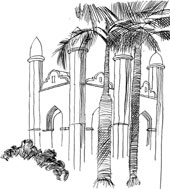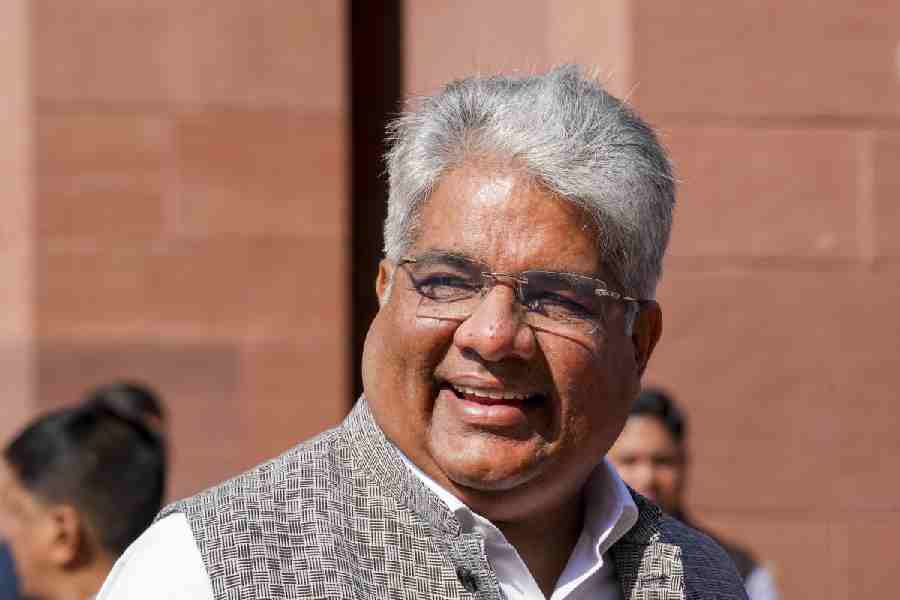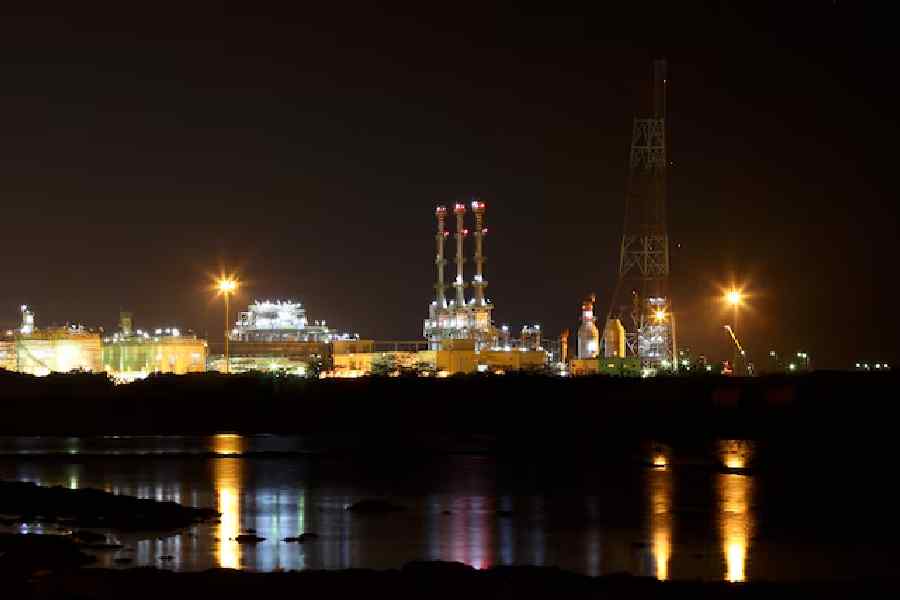 |
After his visit to Assam in 1841 William Robinson wrote that the residents of Guwahati generally lived in houses made of bamboo and reeds, and thatched with grass. Even the residences of the Europeans in town were made of mats and bamboo without even a wooden door. The Assam Administrative Report of 1874-75 mentions that in Guwahati only the Record Room and the Treasury attached to the court were housed in permanent structures. The Guwahati court too had a thatched roof.
So, in 1874, when the then Governor General, Lord Northbrook decided to visit Assam, his accommodation posed a problem. It was, however, solved by converting a part of the commissioner?s office into a circuit house.
The local administration now focussed its attention on a befitting welcome for Northbrook.
One suggestion mooted was to welcome the Governor General by building an arch at the point of his embarkation in Guwahati which would be named the ?Gate of Honour?. It was also decided that the gate would be designed after the famous King?s College Chapel arches of England. Accordingly a design was prepared.
After a great deal of consideration the place adjacent to the Sukreswardevalaya, the site of a weekly market, was selected as the spot where the Governor General?s ship would anchor. And construction of the gate started at the location.
The rectangular gate was to have a total of 12 arches ? five each in the two longer sides and one in each side of its breadth.
The gate was built of brick and white limestone, which lent it a majestic aura. The aura was enhanced by the simplicity of design and the unusual lack of decorative carving of the arches that normally adorn the exterior of such constructions.
There was much justification to accord a grand reception to Lord Northbrook. It was he who finally brought the state of Assam ? which included the five districts of Assam proper (Kamrup, Darrang, Nagaon, Sibsagar and Lakhimpur), Khasi Jaintia Hills, Garo Hills, Goalpara and Sylhet-Cachar ? covering an area of 54,100 square miles under the unified administration of a Chief Commissioner. Lord Northbrook came to Assam to make that official announcement.
Canons boomed as the Governor General alighted from a small ship at the Sukreswar ghat on August 27, 1874. After the gun salute, Lord Northbrook entered Guwahati, then inhabited by about 11,000 people, through the newly constructed gate, standing tall in its magnificent splendour.
The gate, admired by one and all, became the landmark of Guwahati. Apart from the local people, hundreds from outside also came to see this imposing structure. The boats and the ships sailing through the Brahmaputra used to come closer to the banks for a better view of the gate.
For the last 130 years, the Northbrook Gate stands surveying the verdant meadows, enchanting hills and the mighty Brahmaputra. It has remained a silent spectator of many developments of Guwahati.
It has seen the sleepy town develop into a thriving metropolis. It saw the denizens smile when Guwahati was elevated to a first grade municipality in 1878. The same gate welcomed Lord Curzon during his visit at the beginning of the 20th century.
On November 1, 1919, during Rabindranath Tagore?s visit to Guwahati, Jnananadabhiram Baruah accompanied the poet to this gate where Tagore spent quite some time enchanted by the beauty of the Brahmaputra and the surrounding hills. The nature-loving bard wished to remain there till sundown and a chair was hurriedly arranged from a nearby house for him. Sitting under the Northbrook Gate, Tagore watched the sunset engrossed in the serenity he proceeded to the nearby Jubilee Park to deliver his public address.
The gate also saw the city cry when after the assassination of Gandhiji the urn containing the Mahatma?s ashes was kept in its vicinity just before immersion in the Brahmaputra. On 12 February, 1949, the urn was immersed by Pitambar Dev Goswami and Gopinath Bardoloi as Queeny Hazarika sang Jai Raghu Nandana on the lawns adjacent to the Northbrook Gate.
These apart, for some other important reasons also Northbrook Gate remains Guwahati?s most unique landmark. In the earthquake of 1897, when almost all structures of the town collapsed, the gate was the only brick structure to survive the earthquake. It is the only specimen of 19th century British architecture in the city that remains intact today.
Northbrook Gate has a permanent place in Guwahati?s history for another reason as well. For the first time Guwahati was made the capital and administrative headquarters of Assam in 1874 when the province was brought under the Chief Commissionership. Though the town had that privilege only for 40 days then (later it was shifted to Shillong), Northbrook Gate reminds us that for a brief spell Guwahati also had the distinction of being the British provincial capital. Official correspondence refers to Northbrook?s Guwahati visit as the ?visit to the administrative headquarter of the province of Assam?.
This unusual piece of architecture lords over its own rectangular area complete with pavements and lawns. Its somewhat isolated existence serves to enhance its dramatic effect. Rightly the British officials named the Northbrook Gate the ?Gateway of Assam?.
Dipankar Banerjee










